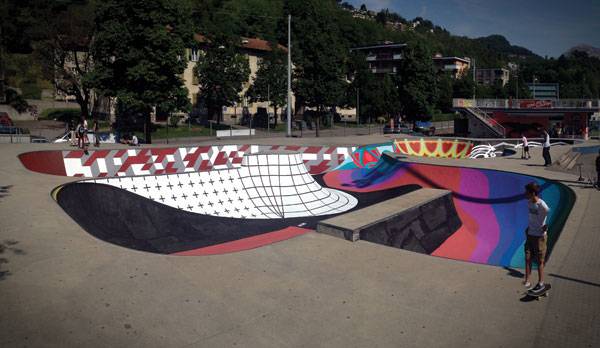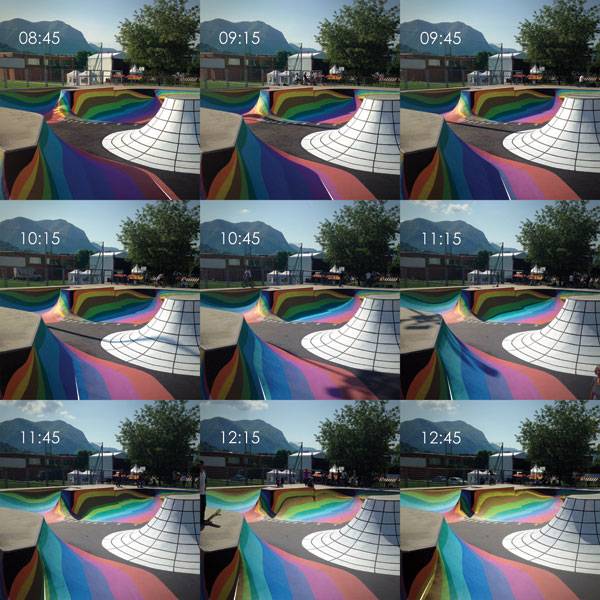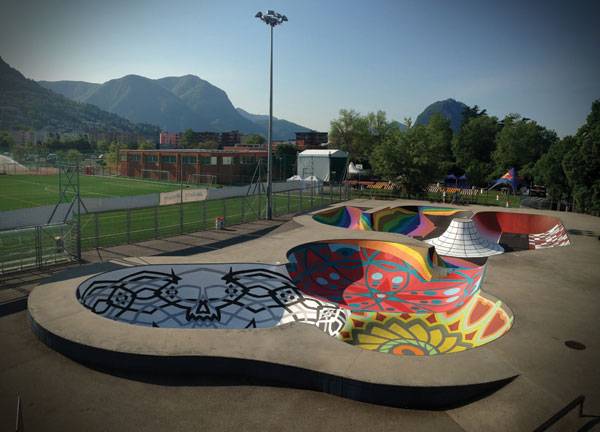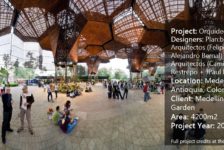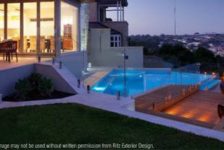Swiss skate park, by Zuk Club. Zuk Club is a Moscow-based collective of artists working in mixed media who explore different artistic styles. Their interests have expanded and flowed into design, monumental, and contemporary art. They experiment through graffiti art and canvassing hard surfaces, such as walls, abandoned houses, old warehouses, and other urban structures. One of their remarkable projects is the intervention of a Swiss skate park. A city that incorporates artwork into its street view is a city that establishes a dialogue between artists who have a passion for city life and the viewers who live there. Graffiti draws upon the urban landscape as a canvas to communicate with both citizens and the material structure of a city. Sadly, urban art is sometimes perceived as vandalism, a subculture synonymous with the destruction of private property. Vandalism is public art that lacks identity and purpose.
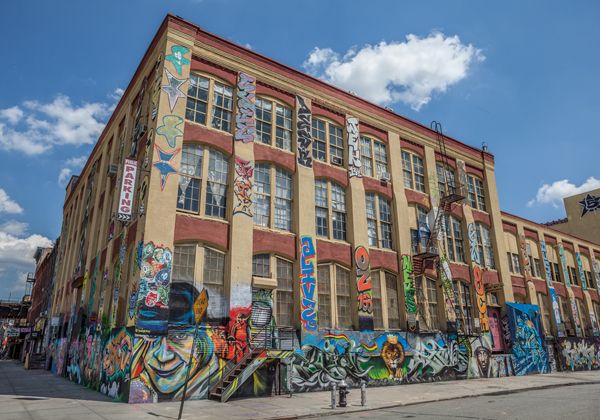
Do you remember 5 Pointz Aerosol Arts Center, Inc. ?
Image and Credit: On September 11, 2013 in New York.5 Pointz, considered to be the world’s premiere “Graffiti Mecca” credit: BrooklynScribe / shutterstock.com
Skate Park: Topography of Desire
Skateboarding is a popular activity among young people who drift through the city, appropriating urban features to accomplish their risky maneuvers. Street skateboarding could be perceived as a subcultural resistance, because it usurps the urban environment. However, skate parks and skate plazas are a great example of the integration among sports, spatial creativity, and the politics of urban design. The Design The concrete ramps of a skate park located in Lugano, Switzerland, combines two activities: graffiti and skateboarding. The bowl is a 1,000-square-meter renovated skate park; its topographic configuration has been intervened by the Zuk Club collective, transforming it with hand-painted modern murals. The murals explore vibrating colors — from red to blue, orange to green — with chaotic transitions of hue spectrums and complex patterns that cover the surface bowl.
In the composition, two sections are visible. On the first section, a rainbow of colors intersects with black and white diamond patterns. A checked complex of red and white overlaid by gray designs creates an optical illusion. On the second section, organic drawings in red and turquoise contrast with black and white fractal and floral designs fitted into one of the pool’s gaps. In the middle of the pool, a conical extruded element is covered by a black and white diamond pattern. Novice and expert skaters are attracted by its singular features and dynamic composition. From Skate Park of Lugano to Skate Park Sundial The skate spot is not only used for skate gliding, it also works as a sundial. The artwork plays directly with light, which casts shadows and marks the time of day. The intention of the collective Zuk Club was to allow skaters enjoy their favorite activity without thinking about time or spending valuable minutes checking their mobile devices. In order to deduce the time, they need only look at the colored stripes painted on the surface. It is a great way of making a leisure activity even more amusing. Related Articles:- Reverse Graffiti – Activism, Art or Vandalism?
- Famous Graffiti Location “5 Pointz” Set to be Demolished
- Lace Art Used to Transform and Beautify Neglected Urban Spaces
- Dream Builders: The World’s Best Skatepark Creators by Justin Hocking
- Urban Street Design Guide by National Association of City Transportation Officials
Article written by Claudia Canales Return to Homepage
Published in Blog


